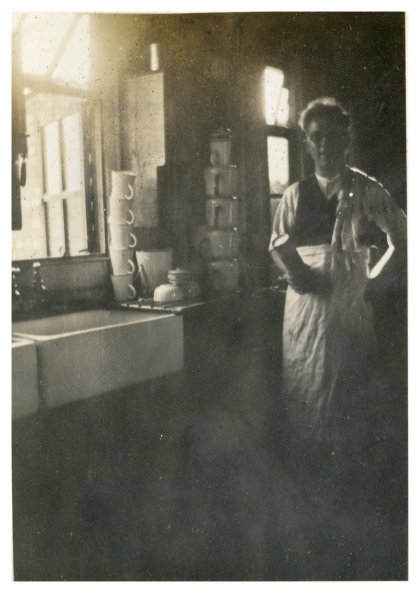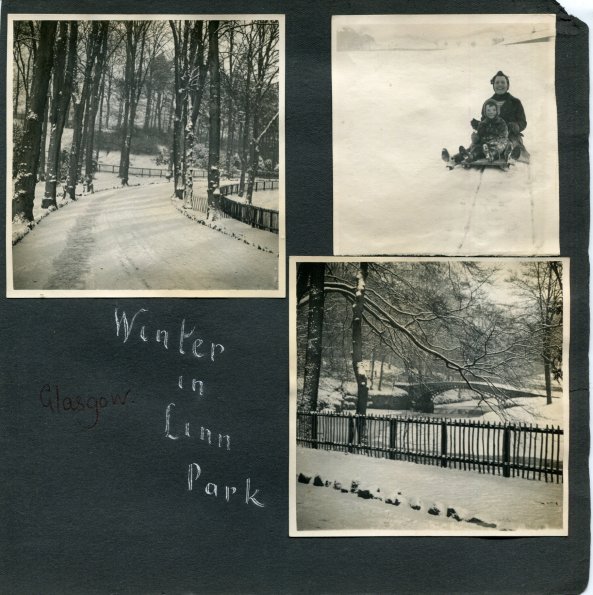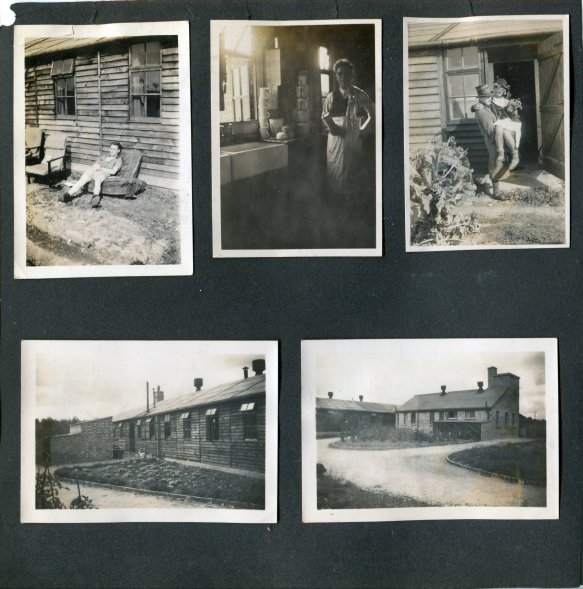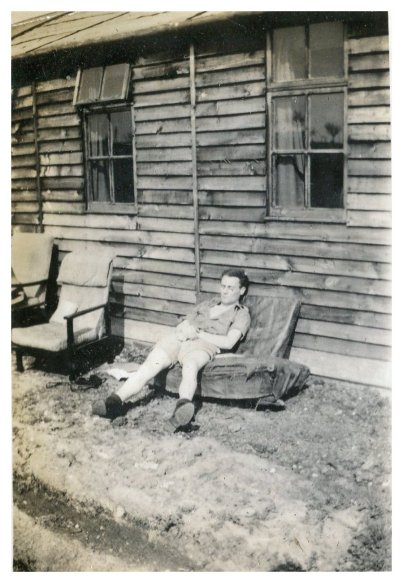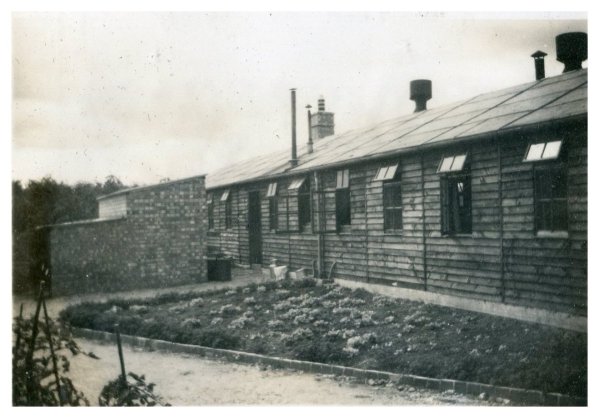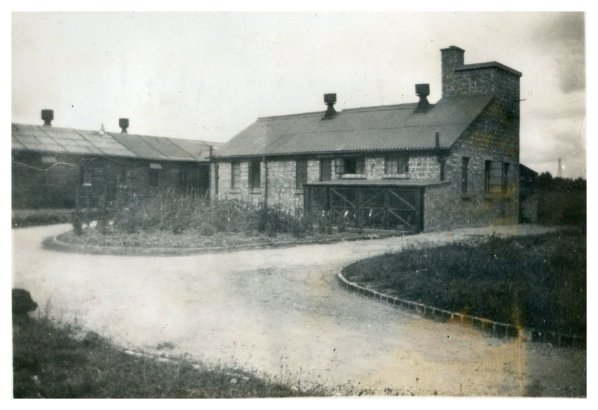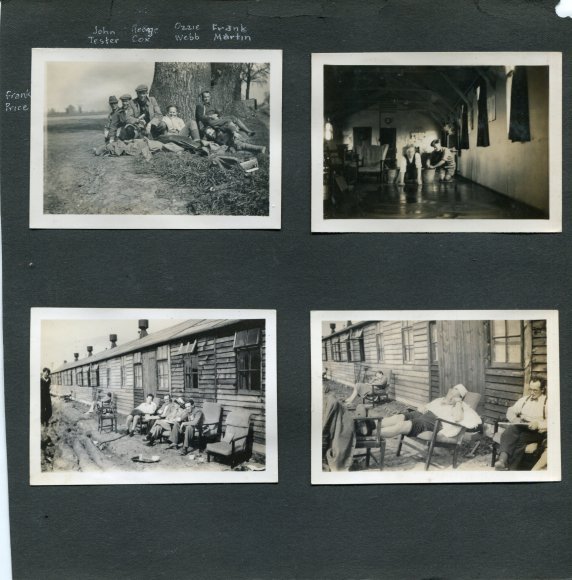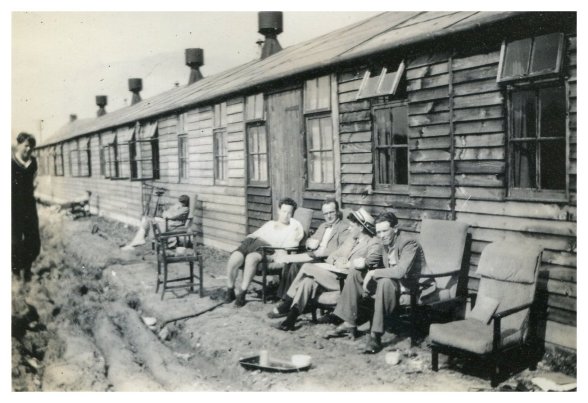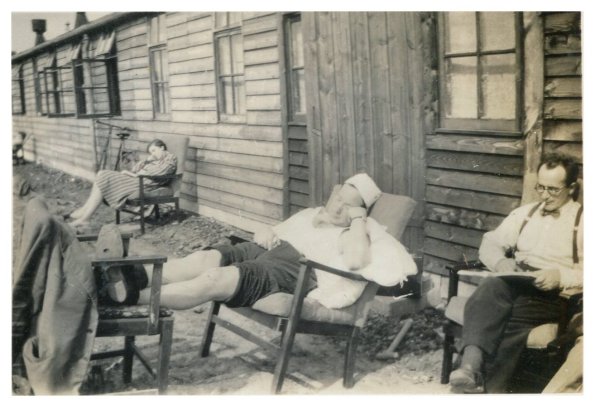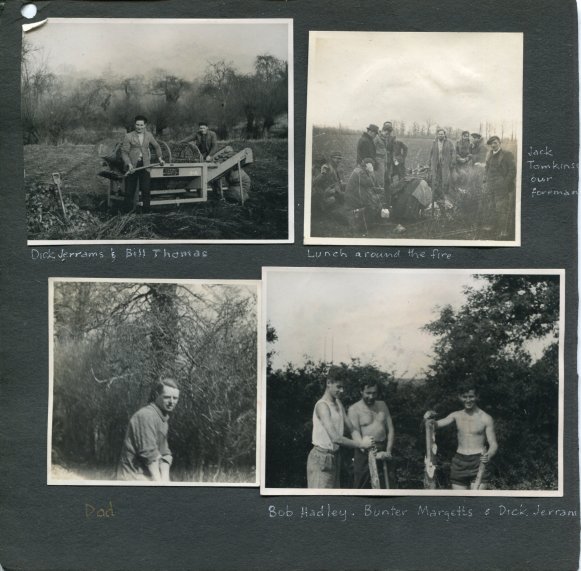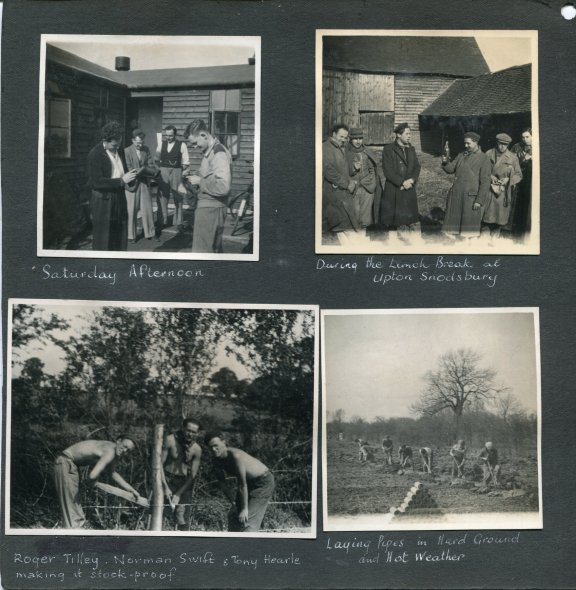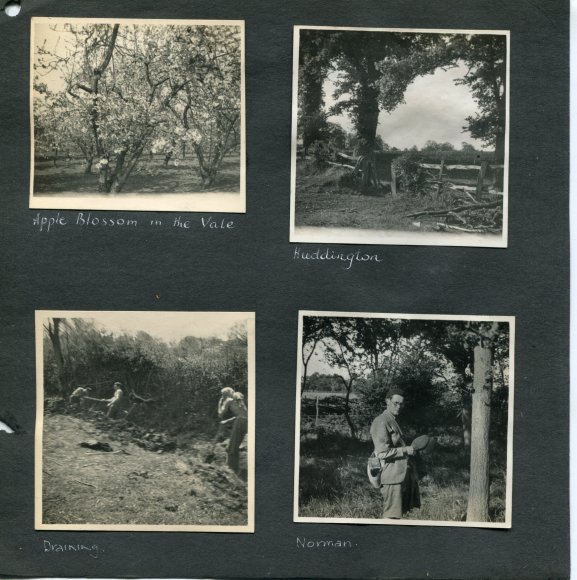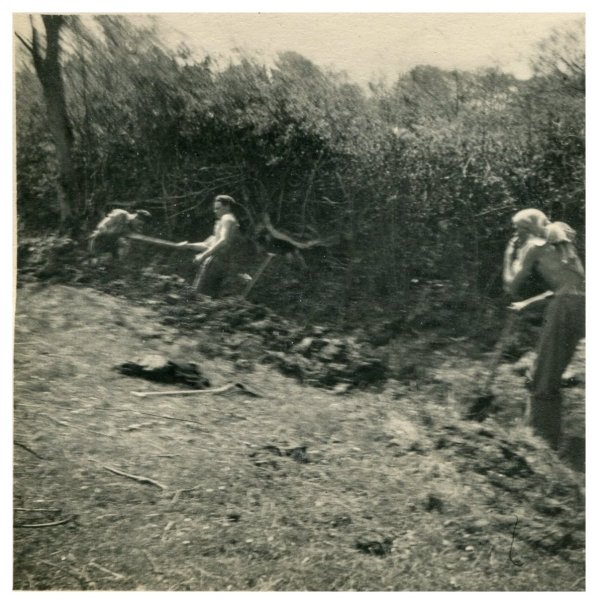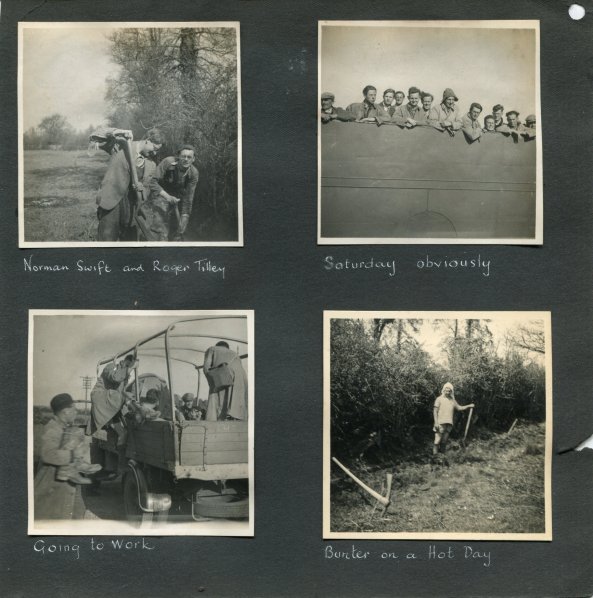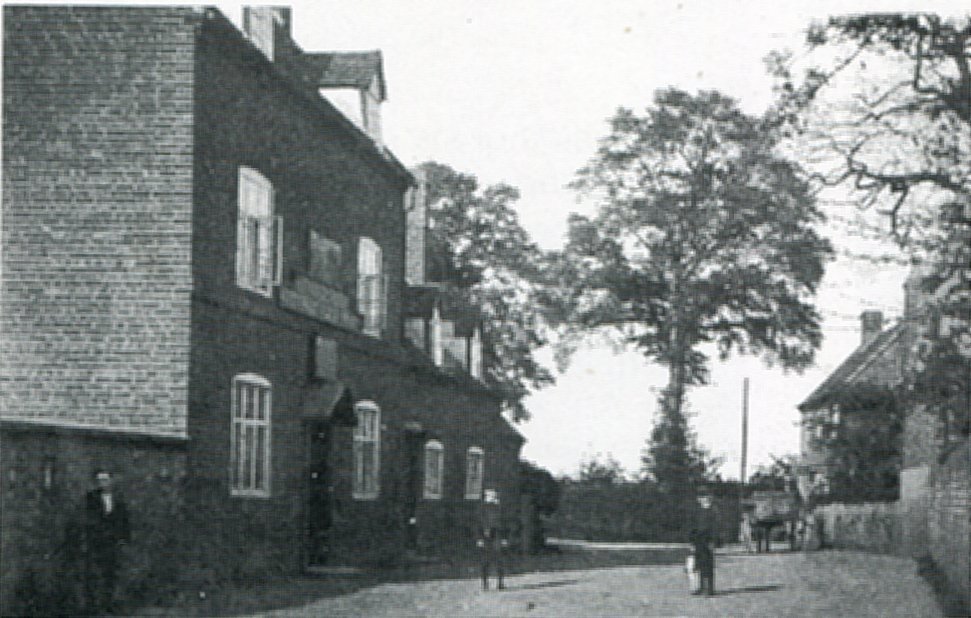
Coach & Horses
|
P O W AND PACIFIST CAMP IN LEYS ROAD, HARVINGTON
|
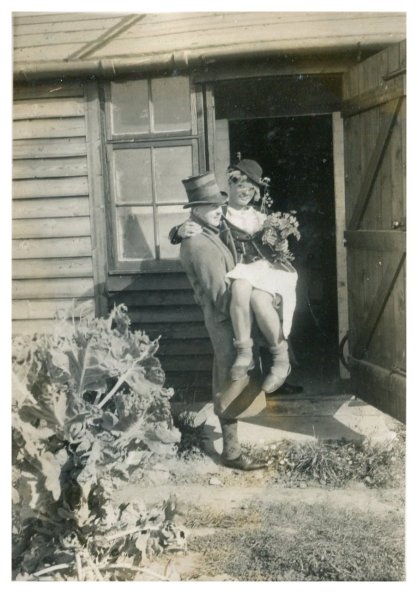
Walter Allvey of Well Cottage helped to start this piece on the POW camp off Leys Road. He mentioned Germans but it appears this camp was for POWs and conscientious objectors - the organisations involved, apart from the Ministry of Defence was, the Christian Pacifist Forestry and Land Units (CPFLU) and Worcestershire War Agricultural Committee. The prisoners appear to have been Italian rather than German however a number of village girls did subsequently marry German POWs - see under the WW2 page. Nothing much was known about the site until Rosemary Jaroszek came forth with a delightful 50th anniversary card giving details of the main building plus a photograph. This was followed up in 2023 by further photographs and information from Jenny Fawbert who had seen this article and wanted to share information that she had gathered from her late father Bernard Lowe (1909-2002).
Harvington P.O.W. Camp: The Harvington P.O.W. camp was situated on the site of present day Leysfield, Leys Road. It began in the early part of the War as a work camp for conscientious objectors. Later in the War it became a German P.O.W. Camp and was run by British Army personnel. The prisoners were taken daily to work on farms and market gardens over quite a wide area, where as a generally hard-working and resourceful bunch they were welcomed by the farmers and growers. In 1946/7 the prisoners began to be "demobbed" and after "vetting", those who wished to stay were allowed to settle in the UK. Over the whole country a great many did remain, perhaps because of the extremely bad conditions in Germany. Conditions in Britain were none too good: we endured food rationing that was more ever than during the War; the worst and longest winter for a century; and a very bad national housing shortage. Much of the existing housing stock was substandard. In many rural areas, such as Harvington was at that time, many of the cottages lacked mains sewerage, mains water, and electricity. "Earth closets", wells, pumps and oil lamps were in use for a few more years and mains gas was still a half-century away.
Walter Allvey, Well Cottage, Hughes Lane, Harvington, 2015.
From Rosemary Jaroszek:-
I have been reading your interesting website and see that you donít have much information on the wartime agricultural hostel for conscientious objectors. My father Alfred Moon did his war service here. He died last year aged 100. He kept a scrapbook about the hostel and the later reunions which he organised. The hostel was run jointly by the Christian Pacifist Forestry and Land Units (CPFLU) and Worcestershire War Agricultural Committee. It opened in November 1941 for 40 men, larger than any earlier unit. CPFLU was set up by Rev Henry Carter to provide accommodation for conscientious objectors working on the land, where they could find support and companionship. There were Italian prisoners of war here as well in my fatherís time. The village residents were a little wary of the hostel workers but the ice was broken by several pantomimes which my father wrote and produced, performed in the village hall.
Thank you for your email. I'm glad you found mine of interest. I'm attaching a photo and a leaflet about the 50 year reunion of the hostel. I've been trying to put names to faces but unfortunately I didn't know this photo existed, otherwise I would have asked my father to identify people - he had a fantastic memory. My father is 5th from the left in the back row.
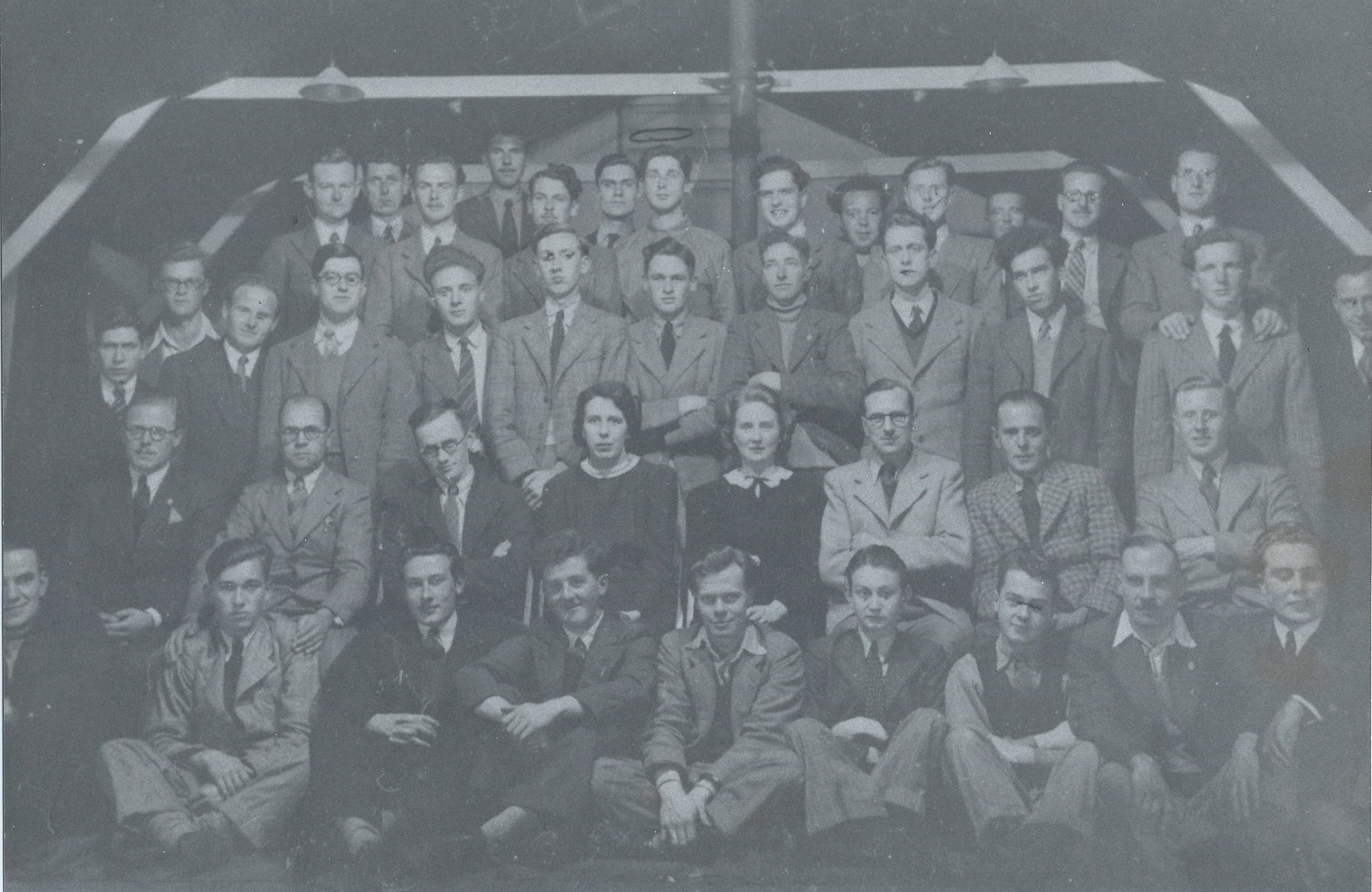
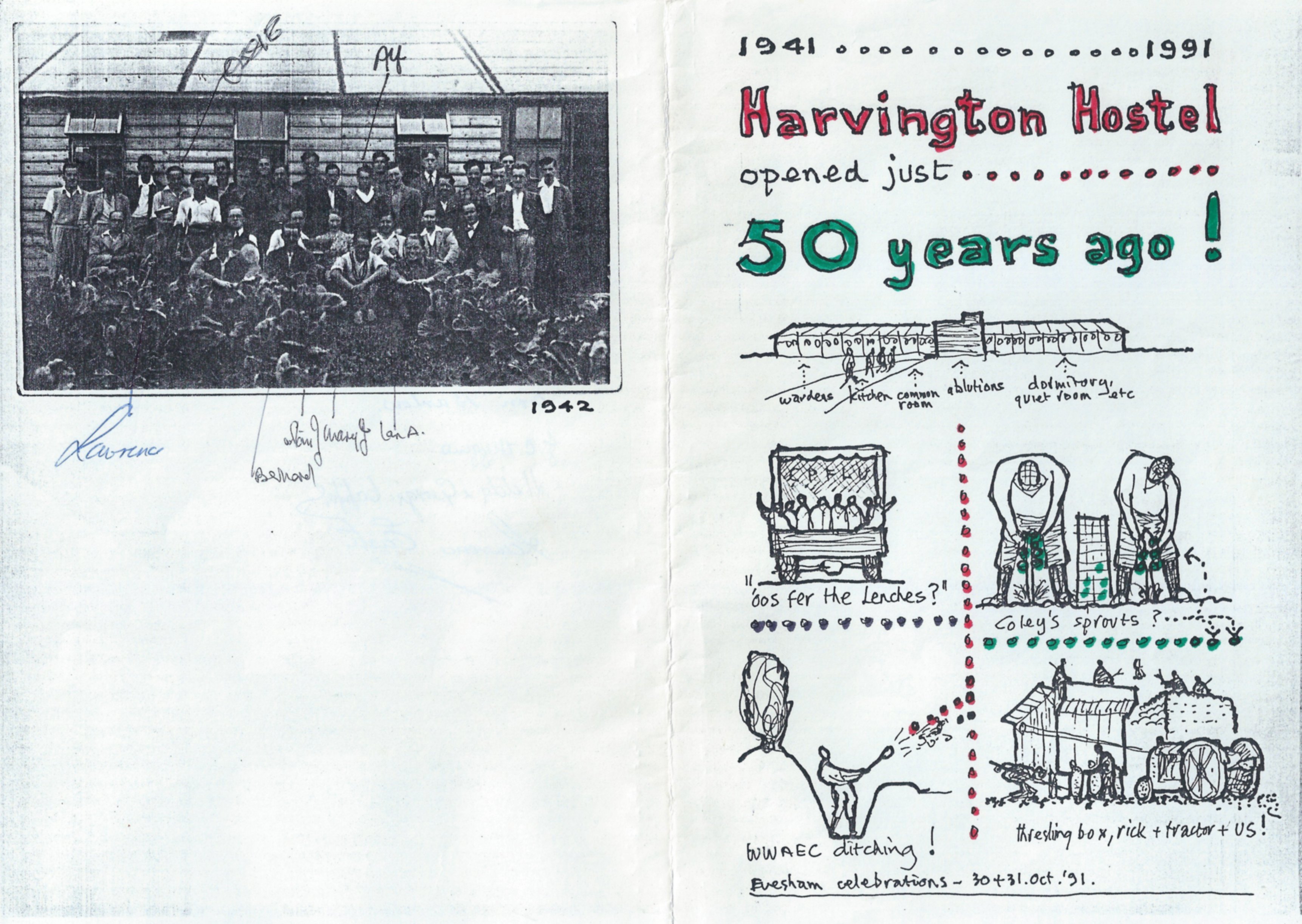
The scrapbook is mainly about the more recent reunions but there is some original material. My father sent some stuff to the Peace Pledge Union archives, unfortunately without taking copies! I believe they also recorded him talking about his experiences.
I don't live in Harvington (unfortunately) but in West London. I was brought up here and my father commuted to Fleet Street for over 40 years to work in the family media advertisement sales business.
It would be nice if you can put something on the website. If I can help with any more information please let me know.
Rosemary Jaroszek, 2023.
From Jenny Fawbert:-
I'll send a photo on a separate message of my father (Bernard Lowe 1909-2002) taken at the camp. He was a Christadelphian and his work as an architect was interrupted in Birmingham at the start of WW2. As far as I know, after he had been through the wartime tribunal process for Conscientious Objectors, he was sent to Glasgow where he worked in the Casualty service based in Govan. In 1941 he was sent to work on the land based in the Harvington Unit.
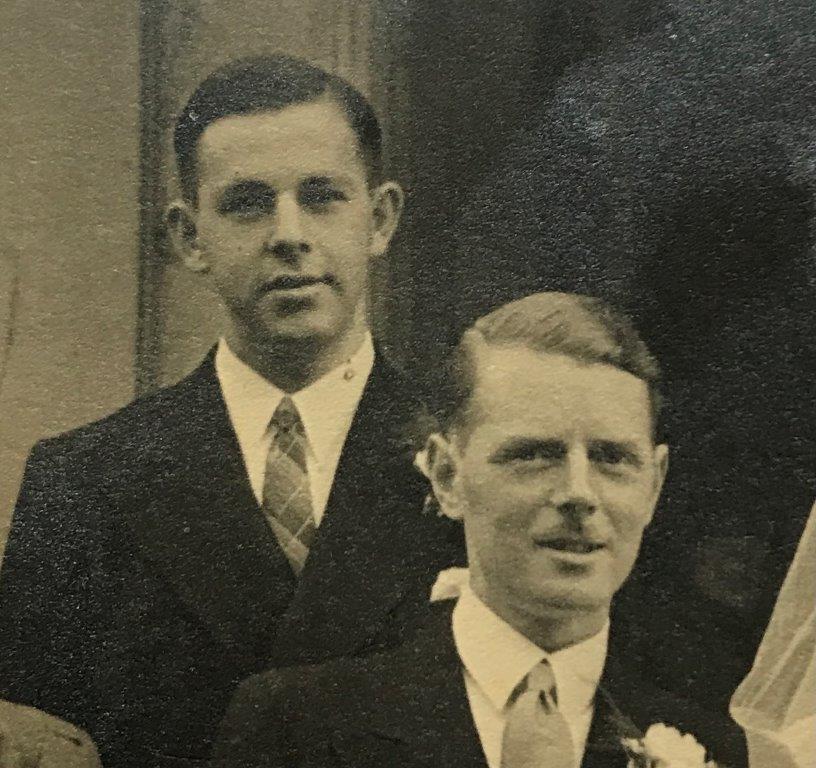
Bernard Lowe at his wedding in July 1942, his best Man was John Southren.
His sister Mary was by this time married to Stanley Jones, they were both Quakers. My cousin seems to think that they both did the cooking at the hostel. They are together in the middle of the group photo. He is the one wearing a tie!
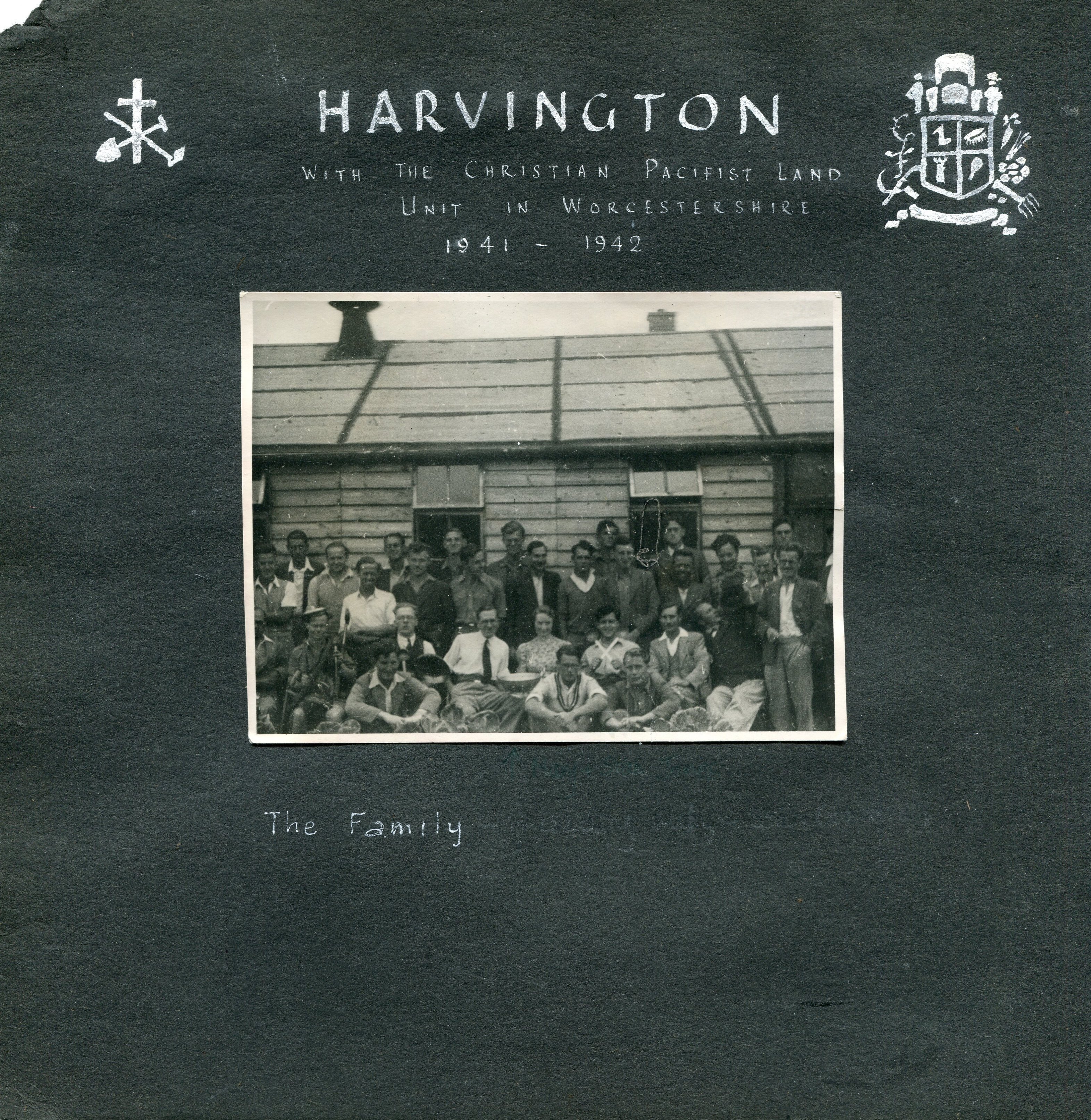
Bernard Lowe's brother-in-law is the one in the centre of the picture wearing a white shirt and tie,
Bernard's sister Mary is sitting next to Stanley.
The group photo was taken by Bernard Lowe my father. Obviously he doesnít feature but my aunt and uncle do, Stanley Jones is sitting in the centre of the picture wearing a white shirt and tie. Mary Jones née Lowe is sitting next to him.
This is an attempt to list and name the individuals in the two copies of the above photograph, can any more names be added? Standing from left to right: 1, 2, 3, 4, ,5 ,6 7, 8, 9, 10, 11, 12, 13, 14 - Len A, 15, 16, 17, 18, 19, 20, 21
Sitting from left to right: 22, 23 - Lawrence, 24, 25, 26, 27, 28 - Stan Jones, 29 - Mary Jones, 30, 31, 32, 33.
My father recorded the names of some of the people depicted on the photo but apparently not in any order:-
Norman Swift, Tony Hearle, Roger Tilley, Bill Thomas, Jack Tomkins (foreman for Dad's group but he may have lived elsewhere), Bunter Margetts, Dick Jerrams, Norman (Lowe?), in which case he was Dad's brother-in-law), Bob Hadley(another Christadelphian), John Tester, George Cox, Ozzie Webb (He and Dad lived next door to each other as children in Erdington, he was an artist), Frank Martin,
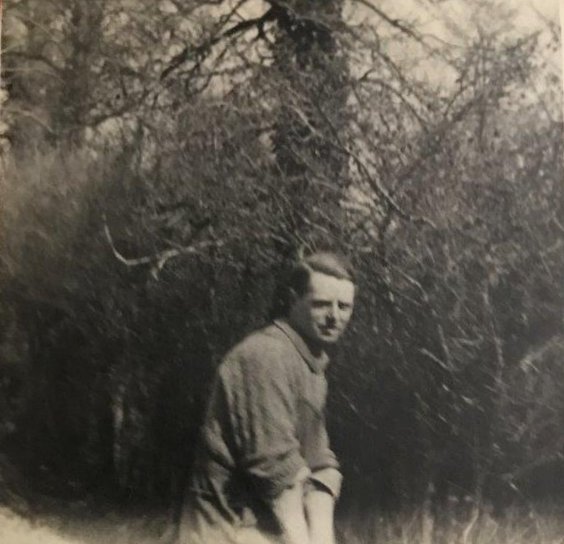
Bernard Lowe working in the fields.
Jenny Fawbert kindly allowed access to a number of other photographs that her father Bernard Lowe had collected in a scrapbook. These delightful photographs taken in the camp and in the fields have been reproduced here.
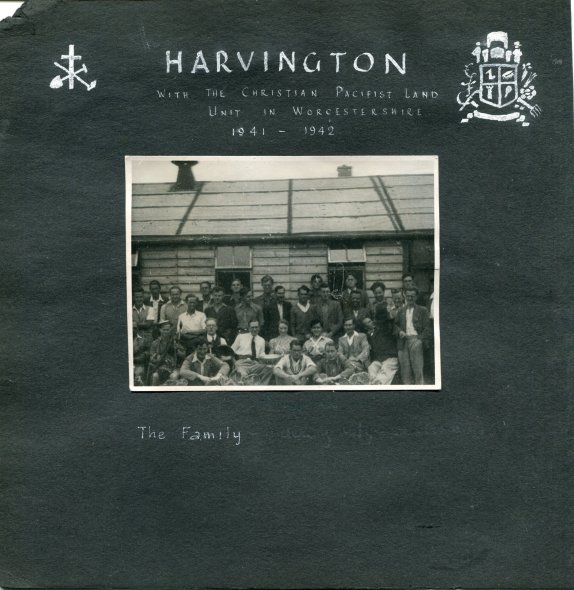
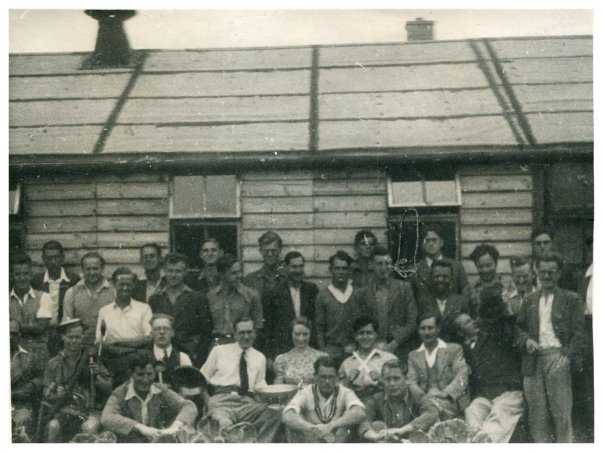
see above section for this photograph
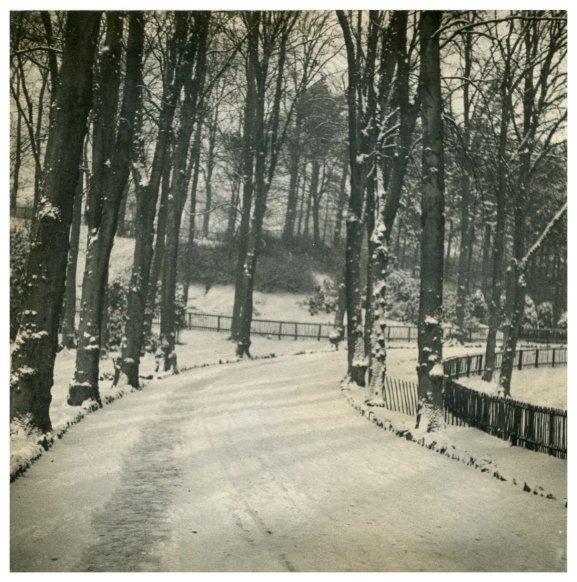
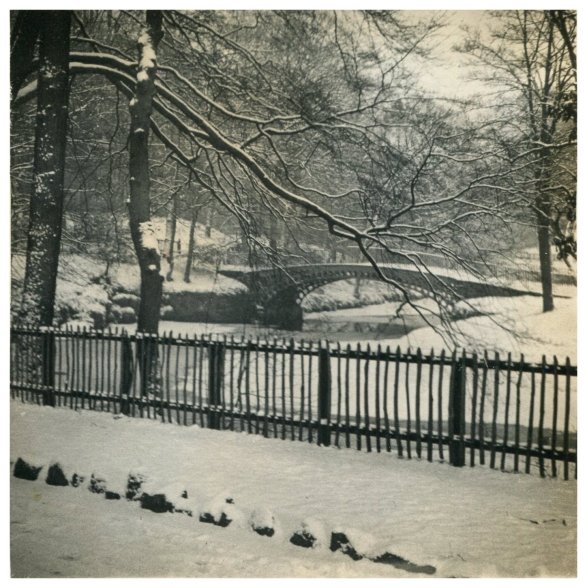
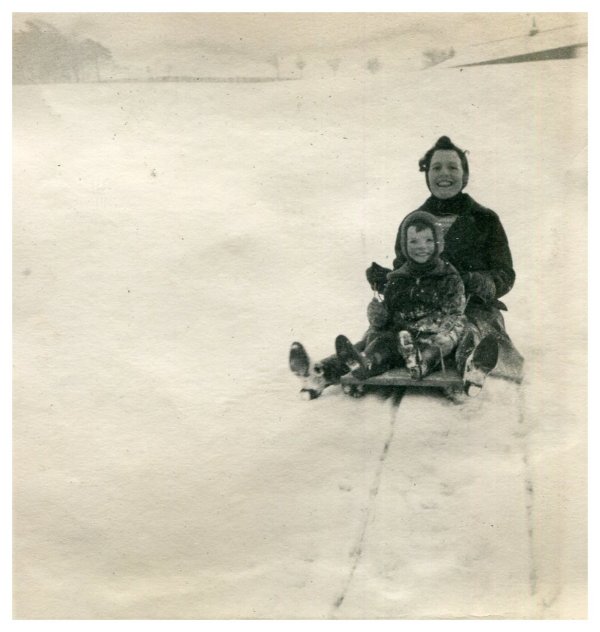
"Winter in Linn Park, Glasgow"
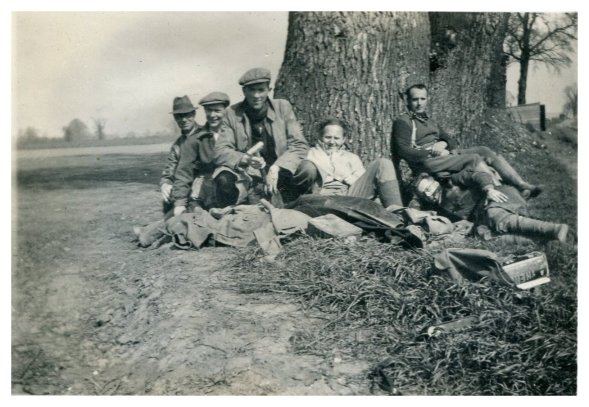
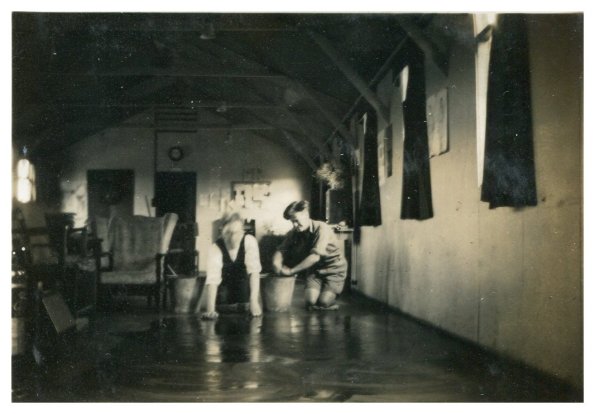
1: "Frank Price, John Tester, George Cox, Ozzie Webb, Frank martin" 2: scrubbing the decks


1: "Dick Jerrams & Bill Thomas" 2: "Lunch around the fire - Jack Tomkins our foreman"
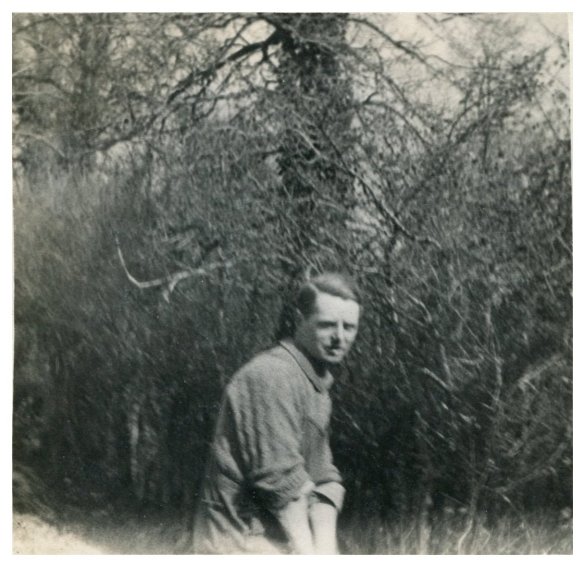
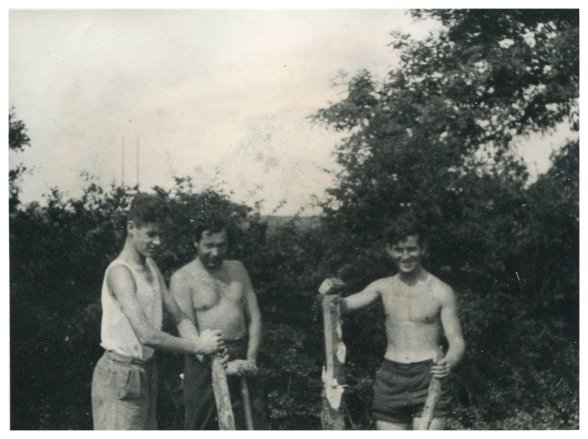
1: Bernard Lowe 2: "Bob Hadley, Bunter Margetts & Dick Jerrams "
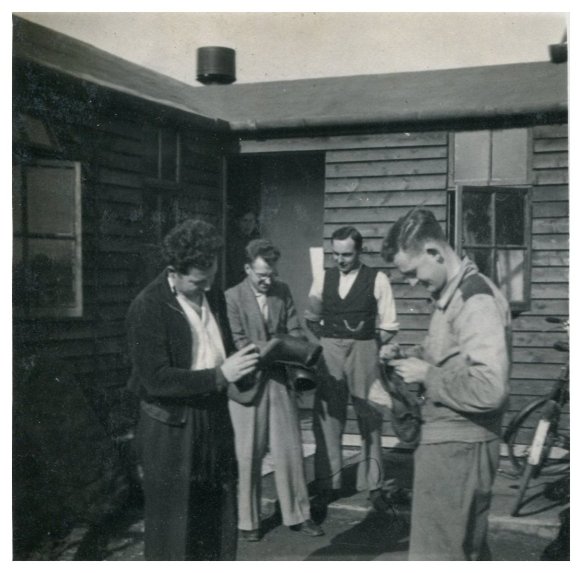
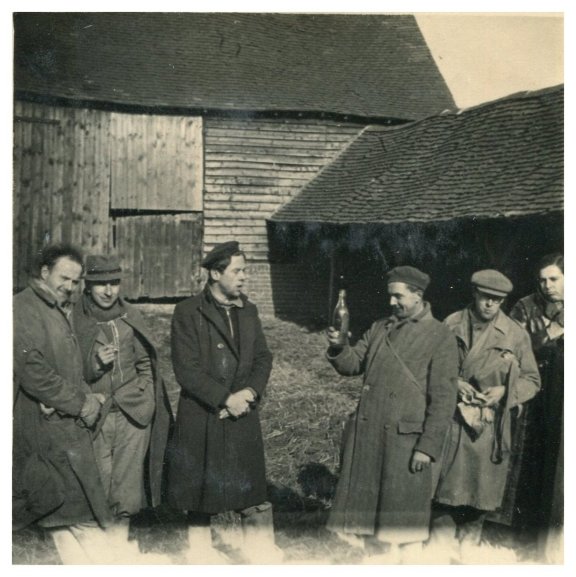
1: "Saturday afternoon" 2: "During the lunch break at Upton Snodsbury"
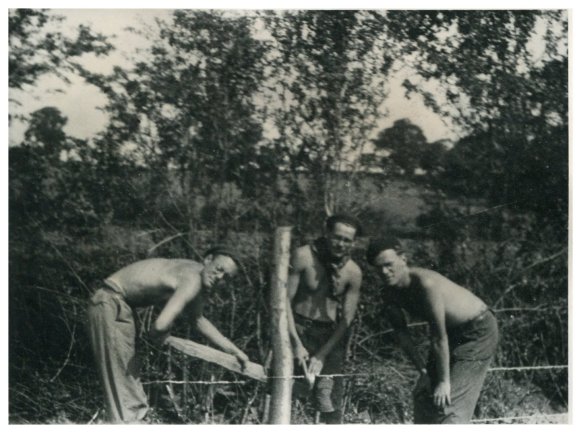
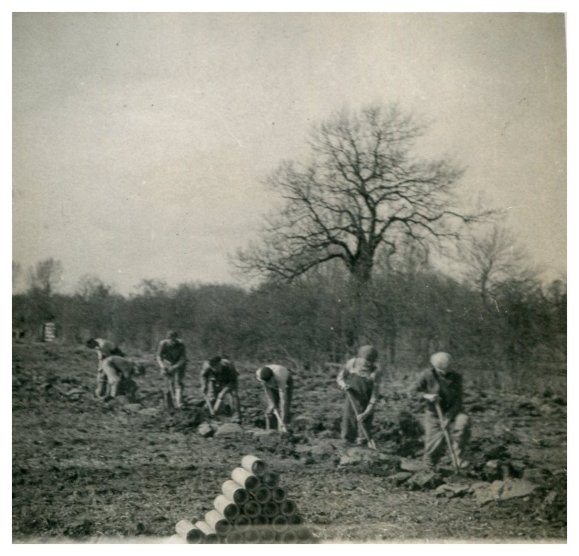
1: "Roger Tilley, Norman Swift & Tony Hearle making it stock proof" 2: "Laying pipes in hard field and hot weather"
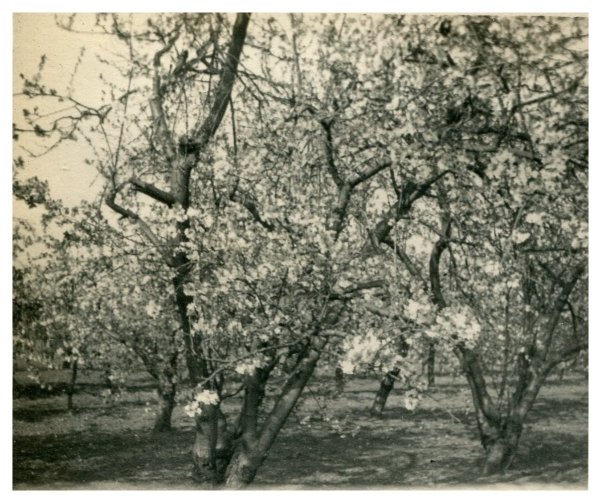
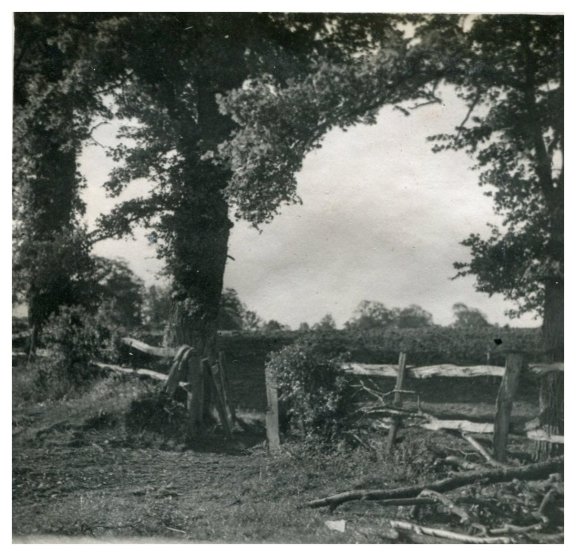
1: "Apple blossom in the Vale" 2: "Huddington"
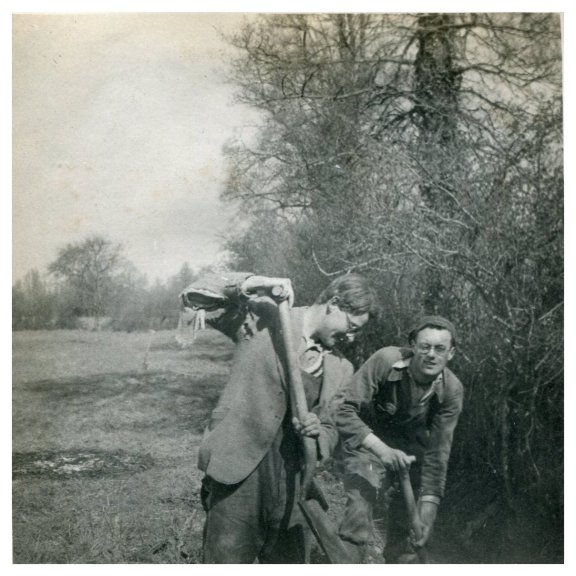
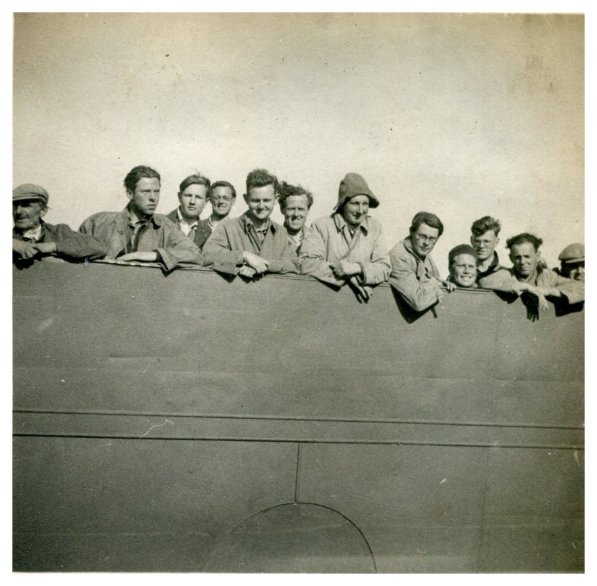
1: "Norman Swift & Roger Tilley" 2: "Saturday obviously"
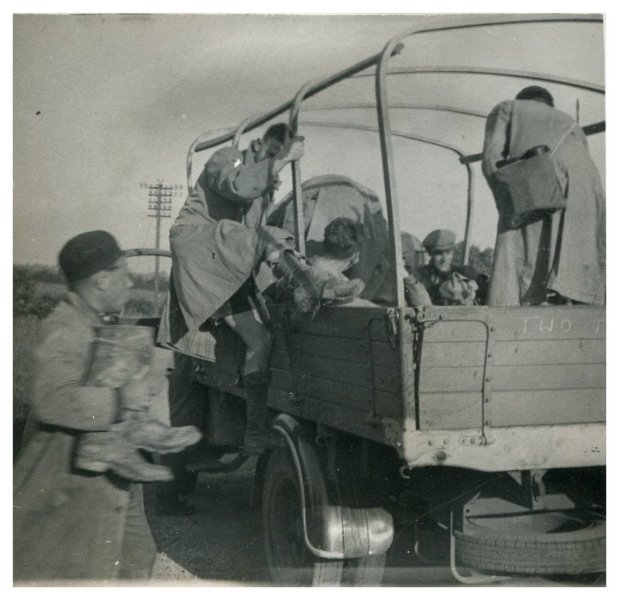
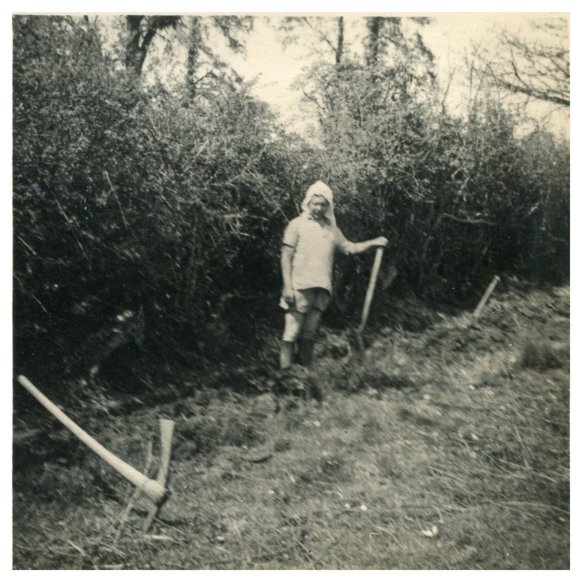
1: "Going to work" 2: "Bunter on a hot day"
